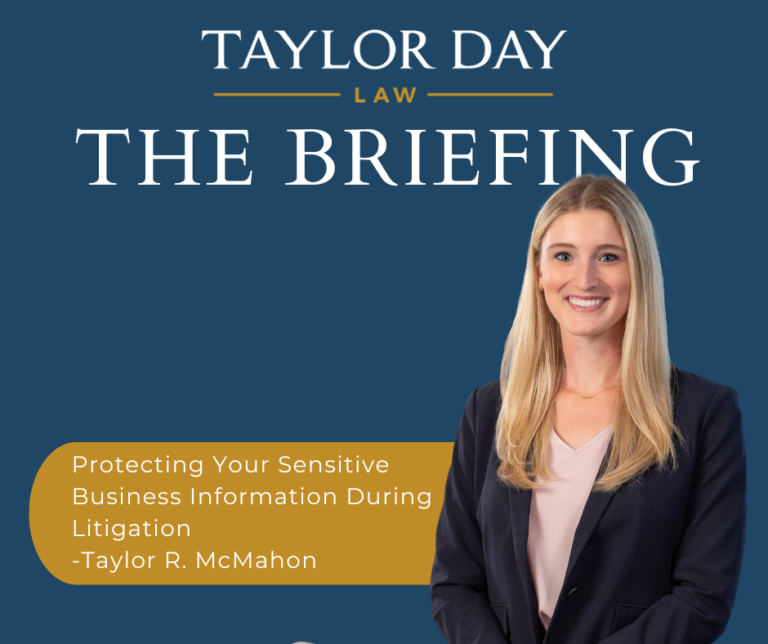You have found yourself in litigation with another business or individual in your industry – perhaps even a competitor – and you are served with discovery that seeks your sensitive, confidential business information or maybe even your trade secret information – what do you do?
All too often, an unintended (or intended for some) consequence of business litigation is the disclosure of confidential business information during discovery. The damage resulting from such a disclosure can be irreparable, particularly when the disclosure is made to your competitor. While there are procedural safeguards in place to protect confidential and trade secret information throughout litigation, such as marking information as “confidential” or undertaking an in-camera review of asserted trade secret information, the knee-jerk reaction is often to simply mark the information as “Attorneys’ Eyes Only” or “AEO.” Yet each of these alternatives are imperfect at protecting your information.
As a starting point, Florida (and most other jurisdictions) has invoked a 3-step process when a trade secret objection is asserted to a discovery request:
(1) determine whether the requested production constitutes a trade secret;
(2) if the requested production constitutes a trade secret, determine whether there is a reasonable necessity for production; and
(3) if production is ordered, the trial court must set forth its findings.
Sea Coast Fire, Inc. v. Triangle Fire, Inc., 170 So. 3d 804, 808 (Fla. 3rd DCA 2014). The first step “will usually… require the court to conduct an in camera review of the documents.” Lewis Tree Serv., Inc. v. Asplundh Tree Expert, LLC, 311 So. 3d 206, 210-11 (Fla. 2nd DCA 2020). When discovery materials do contain a trade secret, the court must then proceed to step two for a determination of the “reasonable necessity” for ordering the production, and the burden is on the Plaintiff to demonstrate such reasonable necessity. See Sea Coast, 170 So. 3d at 809. This second step “requires a trial court to decide whether the need for producing the documents outweighs the interest in maintaining their confidentiality.” Id. The analysis is “fact-specific” and “will depend on the issues in the case and nature of the discovery requested.” See Lewis Tree Serv., 311 So. 3d at 211.
If the Court determines that there is a “reasonable necessity” for the disclosure, “it must set forth findings on these points.” Thus, even if the Court agrees that the information sought constitutes a trade secret, it can still determine that the interests of the case outweigh the confidentiality of the trade secrets sought. Of course, a Court order requiring a party to produce certain documents containing trade secret information can result in that party suffering significant damage to its business operations outside of the litigation. At that point, the available options to protect their determined trade secret information are grim. Typically, the only protections afforded when confidential or trade secret information must be produced are either marking those documents as “confidential,” or marking the documents “Attorneys’ Eyes Only.”
Marking information as confidential protects it from disclosure outside the litigation, but gives your adversary access to your trade secret on the promise that the information will not be shared with any third-parties or used outside of the litigation.
As the “most restrictive” designation, marking the information “Attorneys’ Eyes Only” contemplates information that cannot be viewed by a party, but can only be viewed by a party’s attorney. While courts gravitate towards AEO because it is intended to provide the most protection to sensitive information that must be disclosed, AEO comes with significant costs and often, minimal protection when applied. AEO should be used selectively in litigation as the designation makes discovery and trial preparation significantly more difficult and expensive. Yet, once a Court determines that a party’s interest in disclosure outweighs the associated harm, AEO may be the most effective tool in preventing your opponent from learning your trade secret. However, it is imperative that a Court first make that determination and weigh the competing interests, prior to compelling disclosure, even if the disclosure will be designated AEO.

